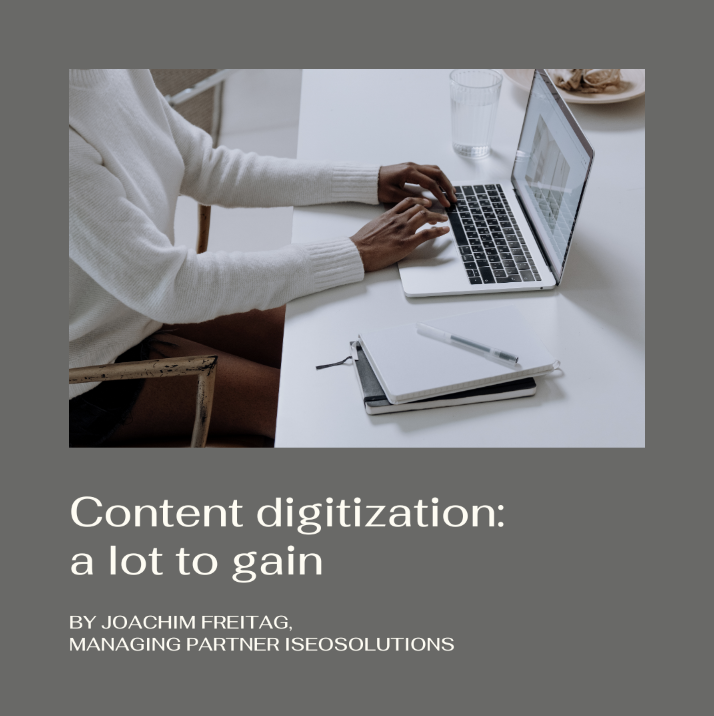
Enterprise Information Management: Trends & Statistics (2025)
Enterprise Information Management (EIM) continues to evolve rapidly, driven by technological advancements and shifting business needs. In 2025 several key trends are shaping the EIM landscape, influencing how organizations manage and secure their information assets.
What Changes are We Seeing in Enterprise Information Management?
The EIM sector is experiencing significant transformations, primarily due to the integration of artificial intelligence (AI), the consolidation of data platforms, and the increasing importance of data democratization. These changes aim to enhance operational efficiency, improve decision-making processes, and ensure robust data governance across enterprises.
Trend 1: AI-Driven Data Management
Artificial intelligence has become a cornerstone in modernizing data management practices. Enterprises are leveraging AI to automate data processing, enhance analytics, and provide deeper insights. This integration facilitates more informed decision-making and operational efficiency. However, it also necessitates robust governance frameworks to manage AI applications effectively.
Key Impacts of AI on EIM:
Automated Data Processing – AI reduces manual effort and speeds up data handling.
Enhanced Data Analytics – AI-driven insights lead to better decision-making.
Improved Data Security – AI can detect anomalies and prevent breaches.
✨ AI is revolutionizing enterprise data management, making processes faster, smarter, and more efficient.
Trend 2: Consolidation of Data Platforms
To address the complexities associated with managing multiple data systems, organizations are shifting towards consolidating their data platforms. This "rebundling" trend involves integrating various data management tools into unified systems, simplifying operations, reducing costs, and enhancing the ability to extract value from data assets.
Why Companies Are Consolidating Data Platforms:
Simplified Operations – Reduces complexity and IT overhead.
Cost Savings – Eliminates redundancies and optimizes resource allocation.
Better Data Governance – Ensures compliance and data security.
Enhanced Collaboration – Improves access and usability for teams.
✨ Businesses are moving from fragmented data systems to unified platforms for better efficiency and control.

Download our free guide
3 Steps to Your Content Digitization (+ Free Checklist)
What You’ll Learn in Our Free Guide:
_Understanding Content Digitization: Learn what content digitization is and why your business needs it.
_Benefits for Your Company: Know how digitizing your content can give your business an edge.
_Critical First Steps: Get actionable insights to properly and effectively digitize your business’ content.
Ready to Transform Your Content Strategy?
Join many other businesses in leveraging the power of content digitization. Download our comprehensive guide and free checklist now!
Trend 3: Emphasis on Data Democratization
Data democratization is gaining momentum as organizations recognize the value of making data accessible across all levels. By implementing self-service analytics and low-code platforms, employees can engage with data directly, reducing dependency on IT departments. This approach fosters a data-driven culture, leading to improved operational efficiencies and more agile decision-making processes.
Benefits of Data Democratization:
Increased Productivity – Employees can access and analyze data without waiting for IT.
Better Decision-Making – More stakeholders can leverage insights in real-time.
Enhanced Agility – Organizations can respond faster to market changes.
Stronger Data Culture – Encourages innovation and collaboration across teams.
✨ The future of EIM is empowering every employee with data access and insights.
When Should You Act on These Trends?
The rapid pace of change in EIM necessitates immediate action. Organizations should assess their current data management strategies and consider integrating AI tools, consolidating data platforms, and promoting data democratization to stay competitive.
Steps to Take Now:
Evaluate current data infrastructure and identify gaps.
Implement AI-driven solutions for efficiency and insights.
Unify data platforms to streamline operations.
Train employees on self-service analytics and data accessibility.
Early adoption of these trends can lead to significant advantages, including enhanced efficiency, better decision-making capabilities, and a stronger position in the evolving digital landscape.
By proactively embracing these trends, enterprises can navigate the complexities of modern information management and harness the full potential of their data assets.
Get started with our no-cost solution discovery session.
Get valuable insights and recommendations from one of our experts during a 60-minute consultation. We'll assess your current situation and areas for improvement. We'll share what your business can achieve with the right solutions.
>> Claim your free session now <<
You might find this interesting
-

Why Organizations Need to Prioritize Enterprise Information Management
-

Content digitization: a lot to gain
-

The Ultimate Guide to Document Management: How to Streamline Your Business Processes



